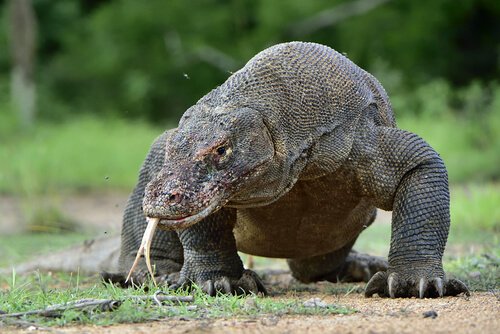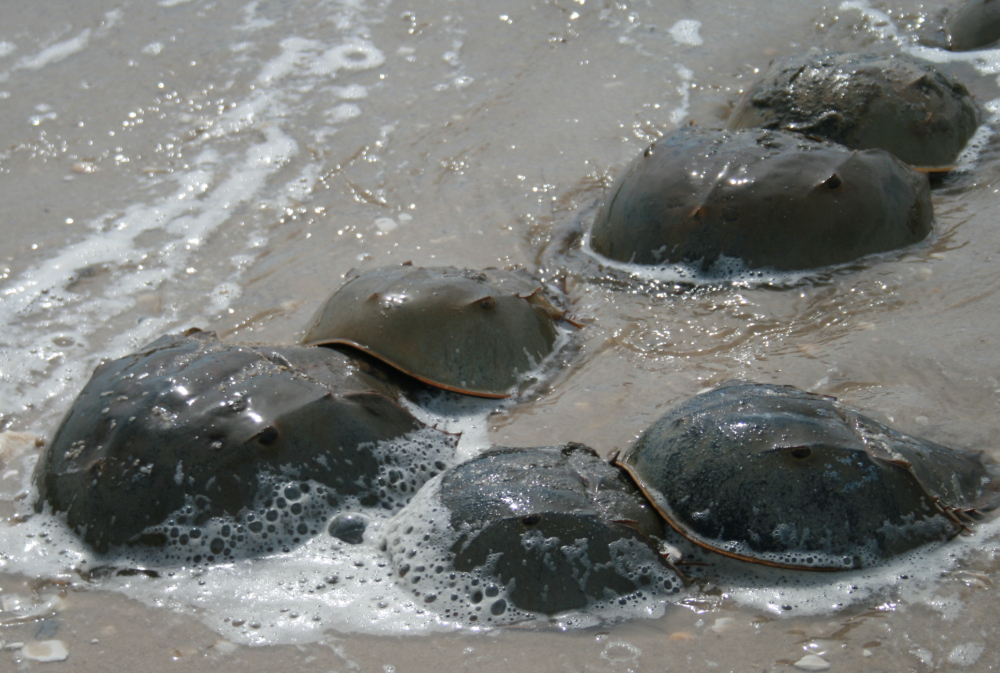The Corinthian
I will not take Mad Winger's name in vain
- Joined
- Dec 10, 2020
- Messages
- 12,107
- Supports
- A Free Palestine
An aquatic zoo (or how do you call that?) in the Netherlands had the same happen with a ray, I read in a report just a few weeks ago. It was actually known already that parthenogenesis was possible in rays though, but it had not been observed like this before.Baby Shark Born in All-Female Tank Could Be The First 'Virgin Birth' For Its Species
Scientists say a rare shark "virgin birth" may be the first of its kind after a baby shark was born in an all-female tank in an Italian aquarium.
The baby smoothhound shark, named Ispera, which means hope in Sardianian, was born at the Acquario di Cala Gonone in Sardinia, Italy, according to Italian outlet AGI.
Its mother had spent ten years living in a tank with one other female, the outlet said, and scientists suspect the newborn could be the first documented case of shark parthenogenesis in that species.
Parthenogenesis is a rare phenomenon where an egg develops into an embryo without being fertilized by a sperm.
https://www.sciencealert.com/a-baby...rn-but-the-mother-lived-in-an-all-female-tank
Baby Shark Born in All-Female Tank Could Be The First 'Virgin Birth' For Its Species
Scientists say a rare shark "virgin birth" may be the first of its kind after a baby shark was born in an all-female tank in an Italian aquarium.
The baby smoothhound shark, named Ispera, which means hope in Sardianian, was born at the Acquario di Cala Gonone in Sardinia, Italy, according to Italian outlet AGI.
Its mother had spent ten years living in a tank with one other female, the outlet said, and scientists suspect the newborn could be the first documented case of shark parthenogenesis in that species.
Parthenogenesis is a rare phenomenon where an egg develops into an embryo without being fertilized by a sperm.
https://www.sciencealert.com/a-baby...rn-but-the-mother-lived-in-an-all-female-tank
Not cuttlefish JP, sharks."All-female", which one of them identified as a female in order to get in and then changed his gender back?
Not cuttlefish JP, sharks.
(Sorry, just saw a movie where they brought that up.)

All conspiring underseas. Slippery bastards. (Not the ones born through parthenogenesis though; I guess that technically cannot produce bastards.)It's probably where one of them sharks got the idea.

It’s incredible. These types of stories always reminds me of Jeff Goldblum’s line from Jurassic Park. “Life, uh…finds a way.”An aquatic zoo (or how do you call that?) in the Netherlands had the same happen with a ray, I read in a report just a few weeks ago. It was actually known already that parthenogenesis was possible in rays though, but it had not been observed like this before.
The 'uh' is what really brings that line to life.It’s incredible. These types of stories always reminds me of Jeff Goldblum’s line from Jurassic Park. “Life, uh…finds a way.”
They counted the candles on its last birthday cake.How do they know how old it is?
They don't really, it's more of a guesstimate.How do they know how old it is?
How do they know how old it is?
"The Greenland shark's eye lens is composed of a specialised material - and it contains proteins that are metabolically inert," explained Mr Neilson.
"Which means after the proteins have been synthesised in the body, they are not renewed any more. So we can isolate the tissue that formed when the shark was a pup, and do radiocarbon dating."
The team looked at 28 sharks, most of which had died after being caught in fishing nets as by-catch.
Using this technique, they established that the largest shark - a 5m-long female - was extremely ancient.
Because radiocarbon dating does not produce exact dates, they believe that she could have been as "young" as 272 or as old as 512. But she was most likely somewhere in the middle, so about 400 years old.
It means she was born between the years of 1501 and 1744, but her most likely date of birth was in the 17th century.


Horseshoe crabs use hemocyanin to carry oxygen through their blood. Because of the copper present in hemocyanin, their blood is blue. Their blood contains amebocytes, which play a similar role to the white blood cells of vertebrates in defending the organism against pathogens. Amebocytes from the blood of L. polyphemus are used to make Limulus amebocyte lysate (LAL), which is used for the detection of bacterial endotoxins in medical applications. There is a high demand for the blood, the harvest of which involves collecting and bleeding the animals, and then releasing them back into the sea. Most of the animals survive the process; mortality is correlated with both the amount of blood extracted from an individual animal, and the stress experienced during handling and transportation. Estimates of mortality rates following blood harvesting vary from 3–15% to 10–30%. Approximately 500,000 Limulus are harvested annually for this purpose.
I think it was in the film “deep blue sea” that they said a shark cannot get dementia or cancer?
And that was the reason for the research.
Is that true?
Sounds like it might be as living til 500 is radio rental.
Thanks for sharing that, very interesting!!
"Marijuana: Spiders made a reasonable stab at spinning webs but appeared to lose concentration about half-way through."
 This web, man, it's like, so freaking cool.....zzzzzzzzzz
This web, man, it's like, so freaking cool.....zzzzzzzzzzErm, what happens to it? It looks like a very unfortunate ending.

Frogs and other amphibians are great mosquito-reducers. If you remove a huge number of them from the landscape, what happens to malaria rates? To investigate, researchers cross-referenced dates of Bd-driven amphibian decline in different parts of Costa Rica and Panama with changes in malaria incidence in those same places. Bd swept across these two countries over the course of about twenty-five years, starting in northwest Costa Rica and progressing south and east. They found that, generally, around a year after Bd entered a county, malaria cases began to increase. They continue to rise for two years, then stay at that higher level for six more, before beginning to attenuate 9 years after the fungus arrived.
“For the six years our estimated effect of amphibian decline is at its highest, the annual expected increase in malaria ranges from 0.76-1.0 additional cases per 1,000 population,” they write, which makes up “a substantial share of cases overall.” (This rate of increase in Costa Rica’s capital, San Jose, would translate to 1000 more cases there.) Higher temperatures and reduced tree cover were also associated with increased malaria cases, although to a lesser extent, and other mosquito-borne diseases saw similar trends, they found.
It’s estimated that 200 species of frogs have gone extinct since the 1970s, and many fear it’s a harbinger of greater biodiversity loss that will come for birds, fish, and mammals too.
Ecologists fear that the planet is in the midst of a mass extinction — the sixth in the long history of life on Earth. And it’s looking like amphibians are the most at-risk class of vertebrates.
This is particularly disturbing because amphibians — which include frogs, salamanders, and caecilians (they look like worms crossed with snakes) — have been around for hundreds of millions of years.
“During the great extinctions of the dinosaurs in the Pleistocene, amphibians made it through with no appreciable effect,” Mendelson says. “So they’re not the most delicate creatures in the world. But the world has gotten so bad now that even the amphibians can’t tolerate it.”
